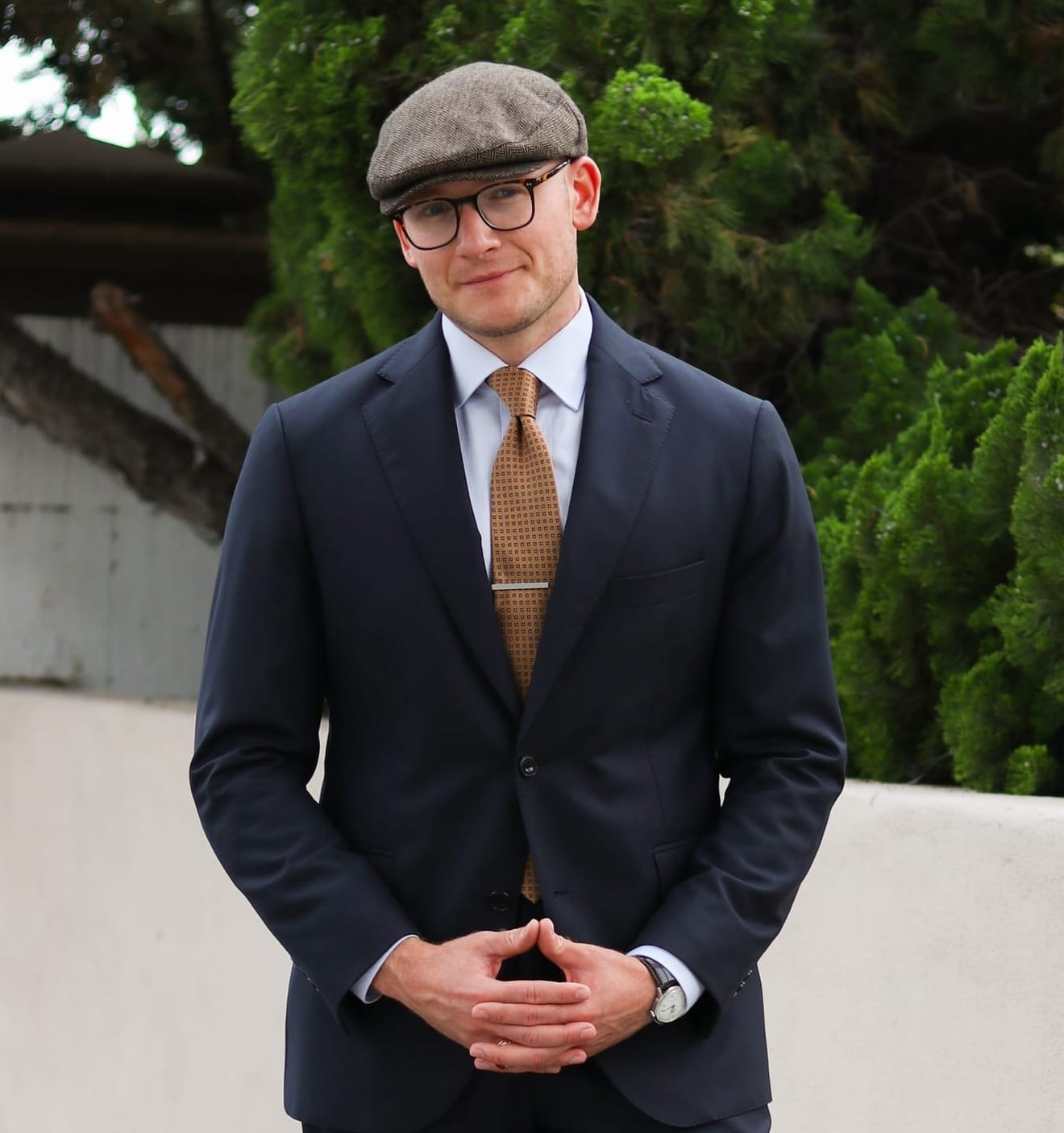
Perhaps the most elegant and flattering outfit any man can wear is a well-tailored suit (you can quote me on that). Since the early 1900s, the silhouette of a fine-fitting suit has been synonymous with the American elite, and even today, it remains apparent that men from virtually anywhere ought to invest in and own at least one well-fitted suit to complete their wardrobe.
This article will teach you how a man's suit should fit and provide some insight into which steps should be taken to ensure success if you are someone looking to purchase your first suit or perhaps rectify the dilemma of owning a suit that does not flatter your frame.
WHAT IS A SUIT?
A suit is a garment comprised of two separate and matching pieces: the jacket and trousers, the materials of which match in both fabric and pattern. If you were to add a vest, this would be defined as a three-piece suit.
Not to be confused with a blazer or sport coat; these are often used interchangeably, and I have found that not many people understand the differences. I know it sounds pretentious, but terms matter because when you know what you're wearing, you are better equipped to wear it well and in the right situations.
FIT IS KEY
As men, our clothes must fit us properly, with no exceptions. Accepting ill-fitting garments means sacrificing what it truly means to dress well. If you have the choice between a high-end, well-constructed garment that does not fit you properly or a cheaper, potentially lesser-known brand piece that fits you perfectly, your decision ten times out of ten ought to be the clothing articles that fit you better.
Before we dive into these eight areas, I'll offer some preliminary advice I have learned when getting fitted for suits and exchanging dialogue with my tailor.
WHEN IN THE FITTING ROOM
A great lesson I learned when venturing into the fitting rooms of past menswear outlets is that your average floor tailor will usually try to serve their customers in the most expeditious way possible. After all, these stores are running a business; alterations take time, and time is money. In some cases, and as a direct result of the time restrictions, store owners often direct floor tailors to make as few alterations as possible to get you out the door quicker; that's just a reality.
This is an essential consideration for a few reasons; firstly, it allows you to prepare better as you invest in your most essential wardrobe piece. Secondly, it helps you manage your expectations so you don't feel underwhelmed when you try on the first suit tailored to you. Lastly, it solidifies the necessity for finding a tailor you can build a relationship with and learn to trust. This last point is critical and genuinely separates the boys from the men regarding a gentleman's style.
This experience will help you learn better about your body and how clothes must be altered to fit your build and flatter your frame. Very few men find clothes that fit them perfectly every time off the rack, and when it comes to suits, we must never compromise on fit.
Before stepping into the fitting room with any tailor, I recommend the following:
- Wear a standard pair of dress shoes so that you and the tailor can see how the trousers will fit in relation to the appropriate footwear.
- Bring a belt to pair with the pants to see how it will fit with the final product (assuming that your suit will include belt loops and not side adjusters).
- Bring a well-fitting dress shirt to wear with the suit to give you and the tailor an idea of how it will pair with the jacket (more on this in later sections of the article).
- Keep your keys, wallet, and everyday items in your pockets, which you would typically have on you when wearing the suit. This ensures that when you end up wearing the suit, you're refraining from creating unnecessary bulges that disrupt the harmony in your overall appearance.
1. DRESS SHIRT COLLAR
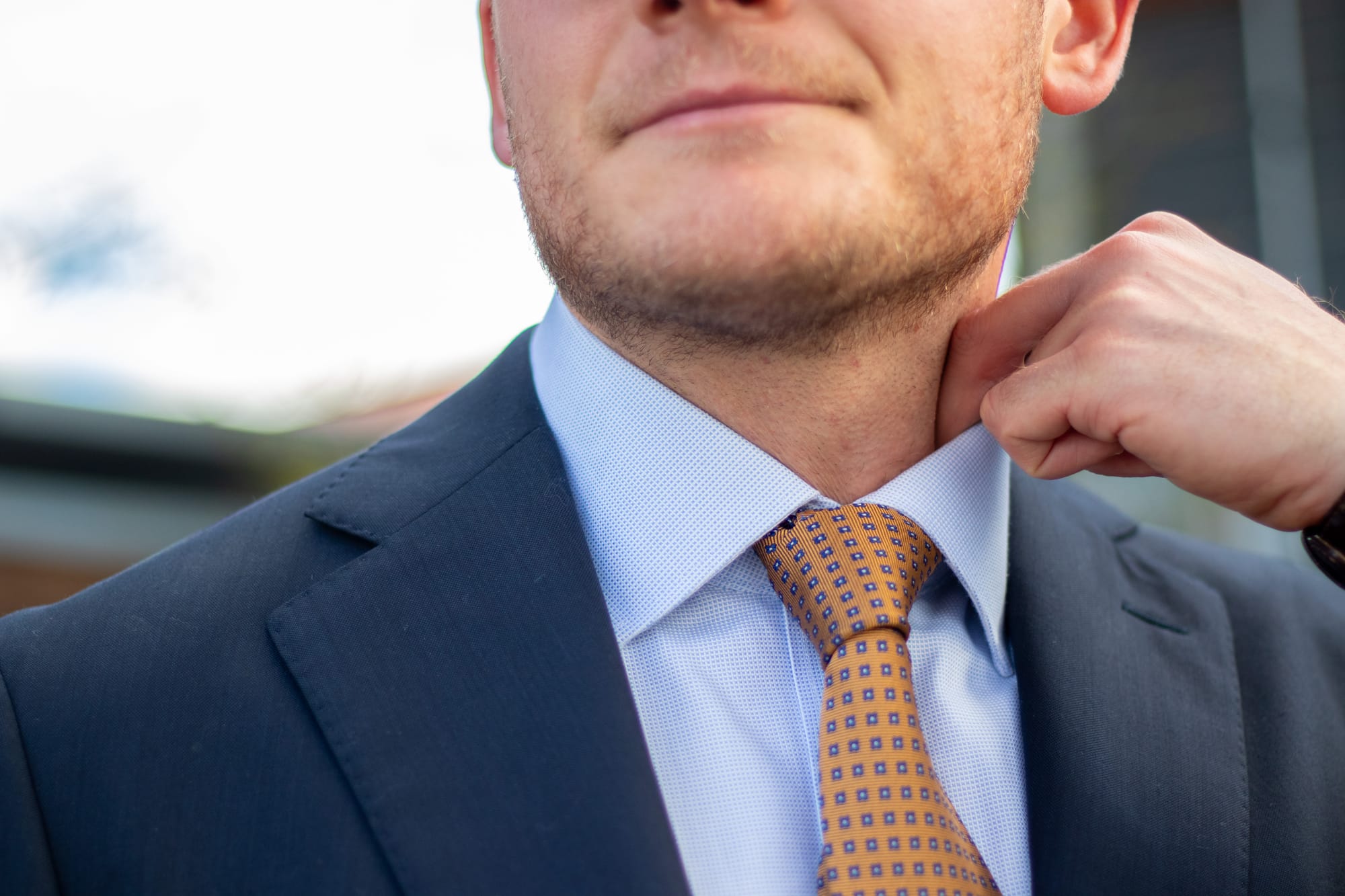
We are most concerned with the dress shirt itself when discussing the neck. Even though this is technically a separate component of the overall suit makeup, it is a logical and standard complement to any man's first actual suit. Therefore, it demands attention.
When buttoned up to fashion a tie around the neck, the dress shirt collar shouldn't be choking you; instead, it should feel natural around your neck. A general rule to abide by is to retain the ability to slide a finger or two between the dress shirt collar and your neck with reasonable ease. Hold it there for a bit, and if you feel too much pressure (trust me, you'll know), the collar is too tight. It is too loose if the collar is buttoned, and there is enough visible room for your neck to move freely (exposing excess fabric).
Looking good on this front should never be uncomfortable (you'll hear this a lot throughout the article).
2. SUIT JACKET COLLAR & LAPEL
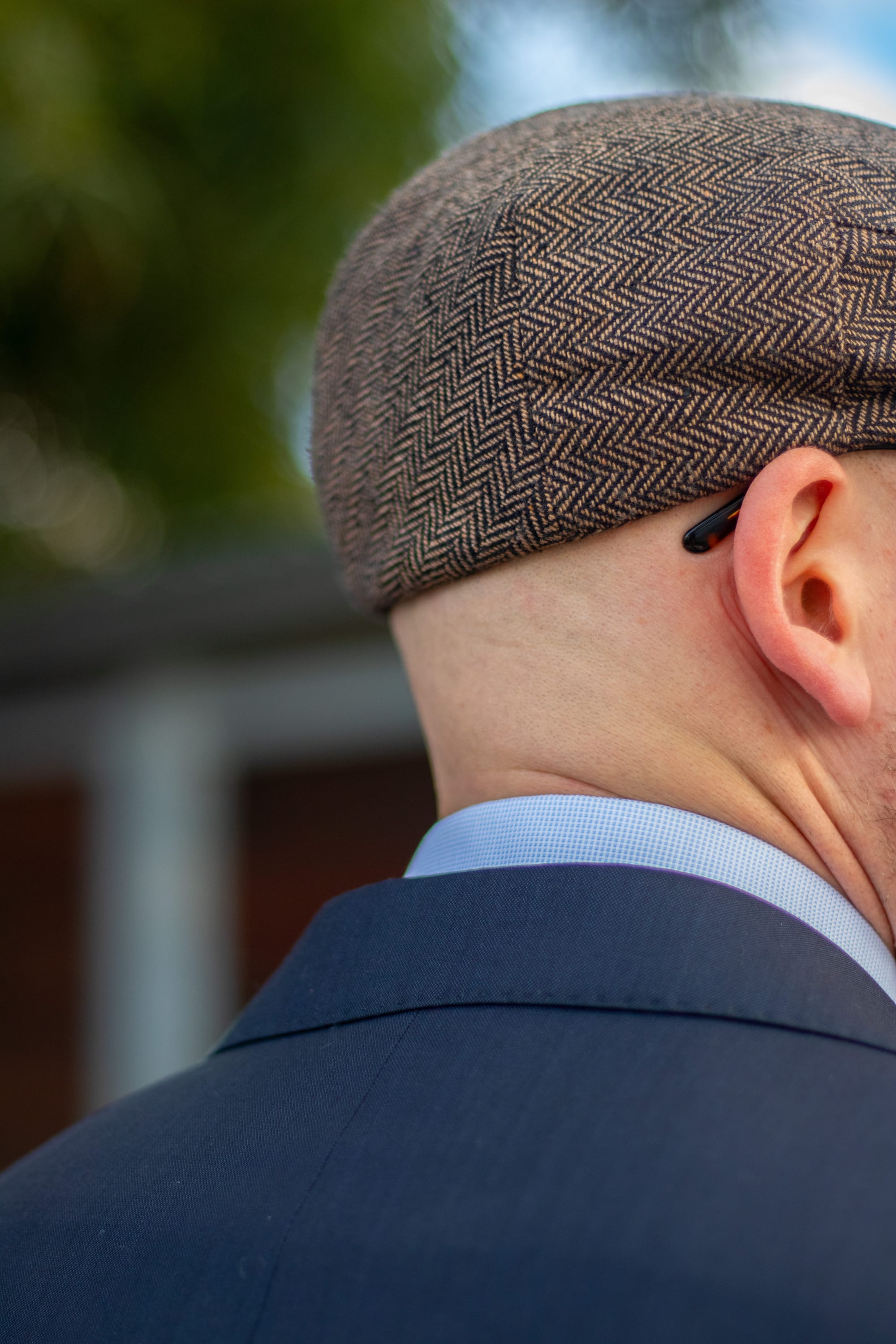
Too often, men select a suit pattern or color that they fancy but overlook the jacket collar and lapel size. If this occurs, then what inevitably follows is a disruption in the harmony of the outfit. From there, it can be a very slippery slope.
A smaller-framed man requires a thinner lapel (albeit not too narrow). A burlier or broader gentleman thus requires a thicker jacket collar with an appropriately proportionate dress shirt. In other words, the collar and lapel proportions should be similar to your build. Wide collars and lapels on small men draw attention to their smaller stature; conversely, more prominent men with smaller lapels betray their physical presence.
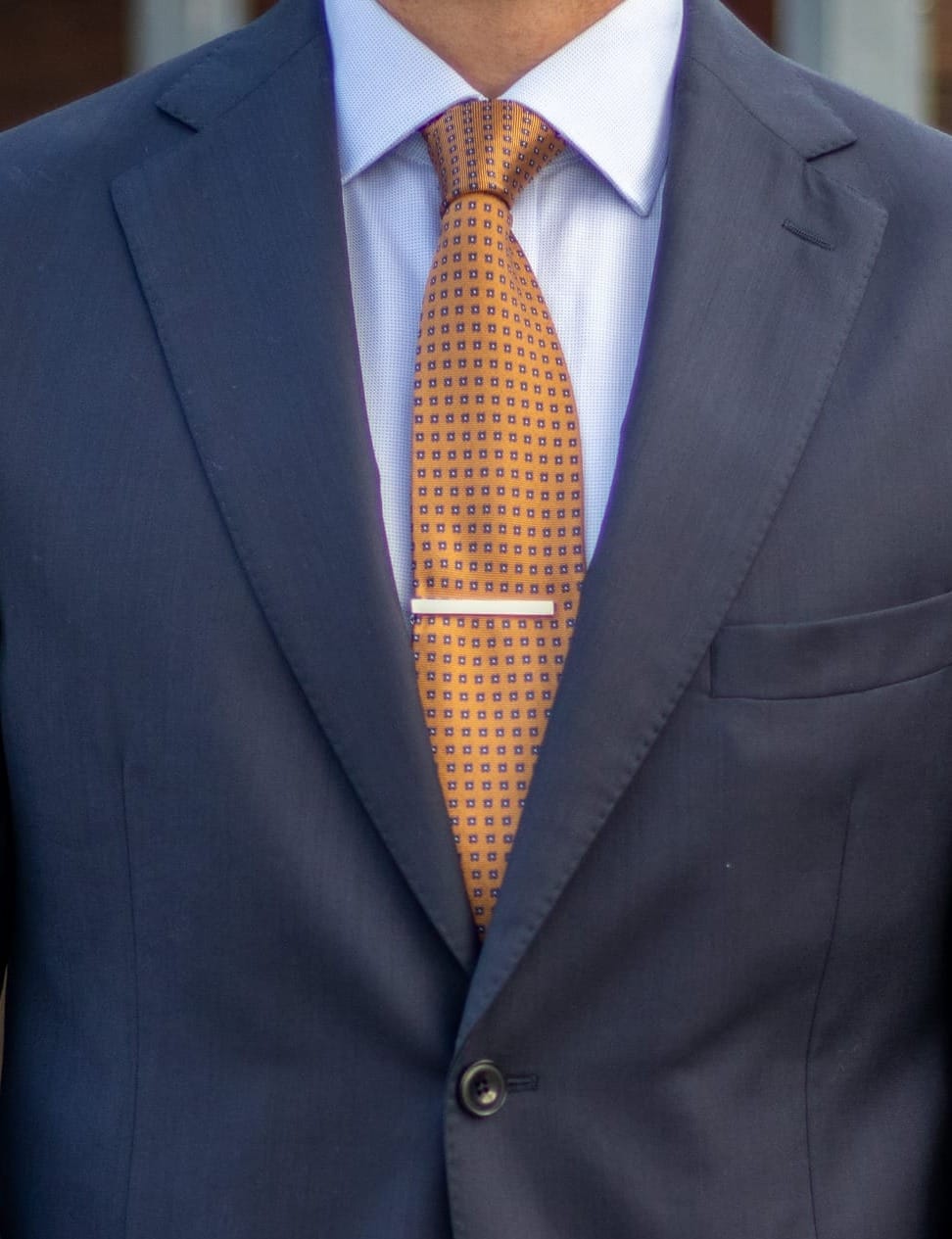
This is about embracing your stature by selecting the appropriate lapel to compliment and flatter your body.
The jacket collar should sit well on your shoulders. Ensure that it does not stack or bundle against the shirt collar and doesn't stand away from or even conceal the dress shirt collar. When observing a rearview from behind the neck to check the fit, ensure that half an inch of the dress shirt collar is visible from the back; if the jacket collar is higher than the shirt collar, the jacket is too big.
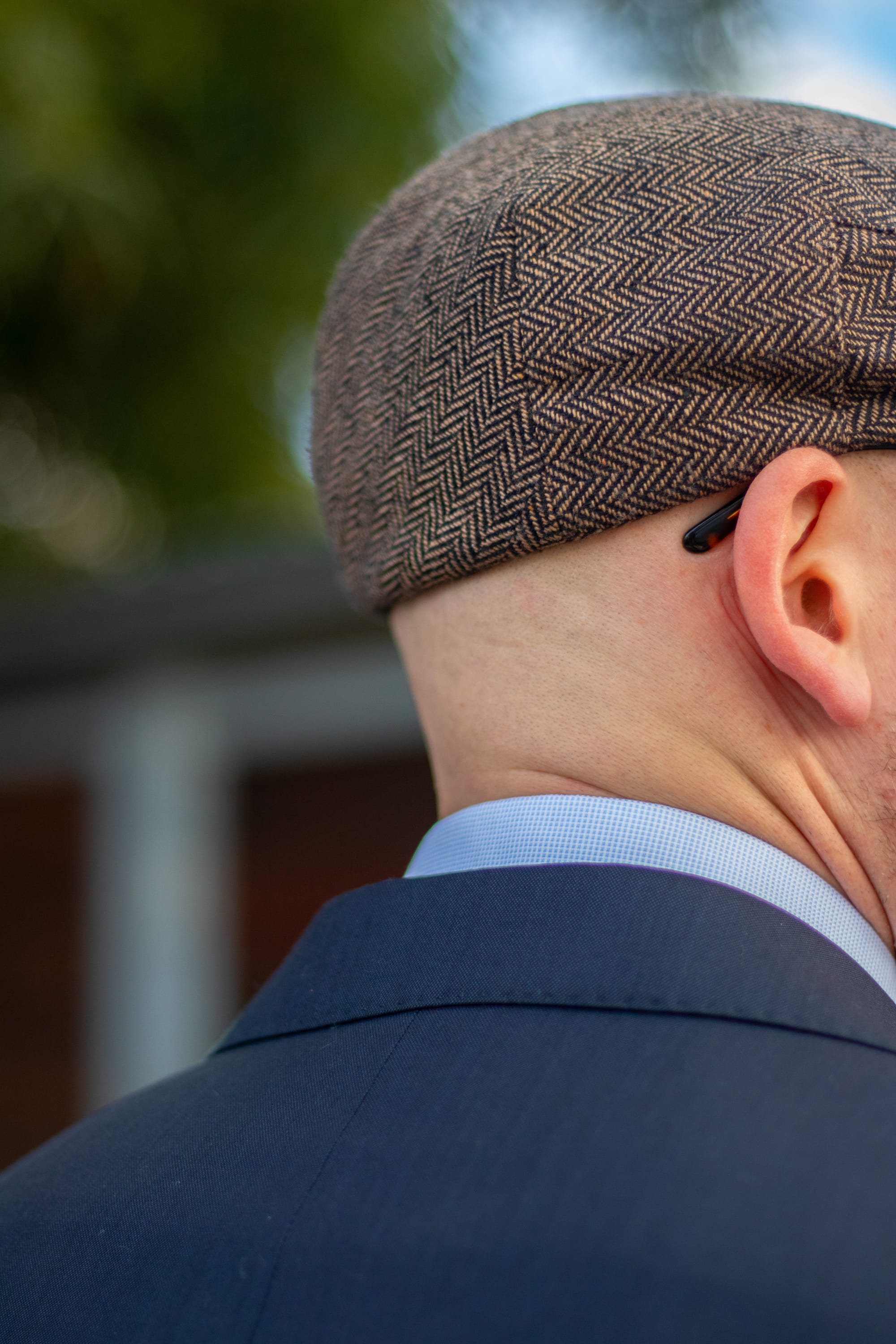
On the flip side, if too much of the dress shirt is exposed and protruding from the jacket collar when viewed from the rear, the jacket is too tight and will restrict movement.
AVOID COLLAR GAP
The jacket collar leading into the lapel should fit reasonably tight around the dress shirt collar when buttoned at the waist. Any gapping between the dress shirt collar and the jacket collar will result in a sartorial term known as "collar gap," which is precisely as it sounds. An experienced tailor can fix this, but if done incorrectly, it can lead to other issues concerning alterations (so it is best to catch it early).
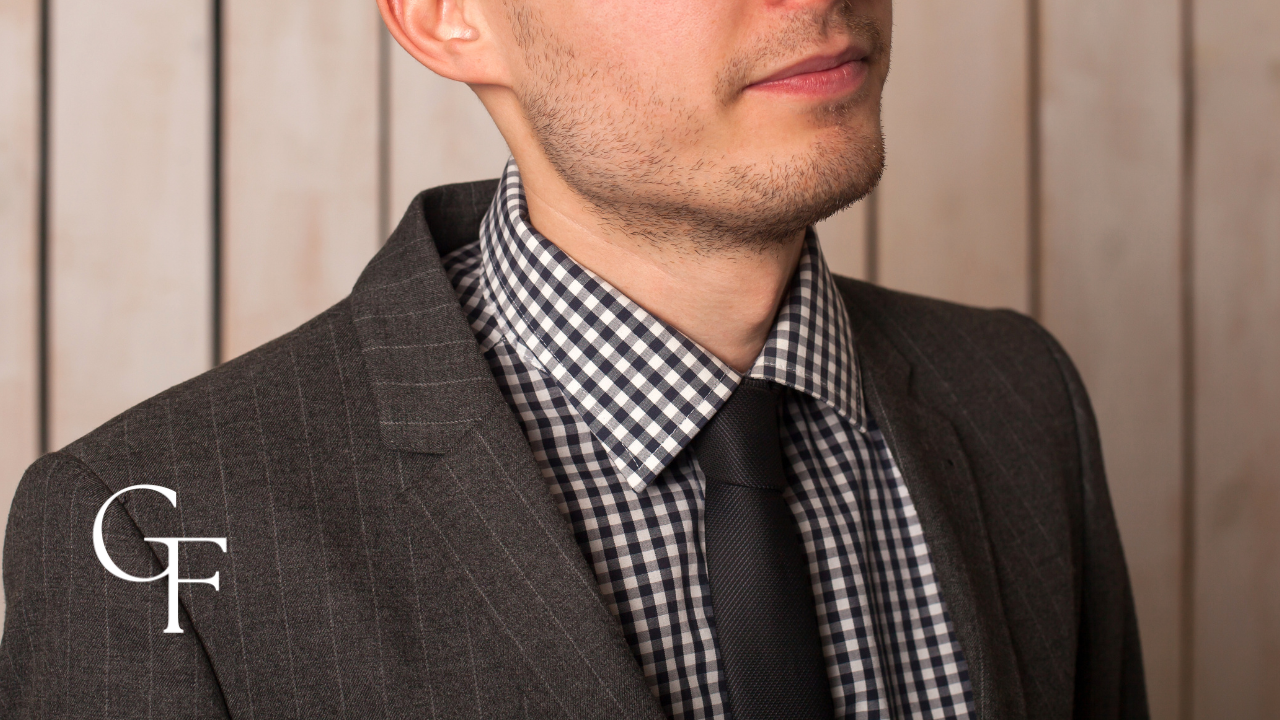
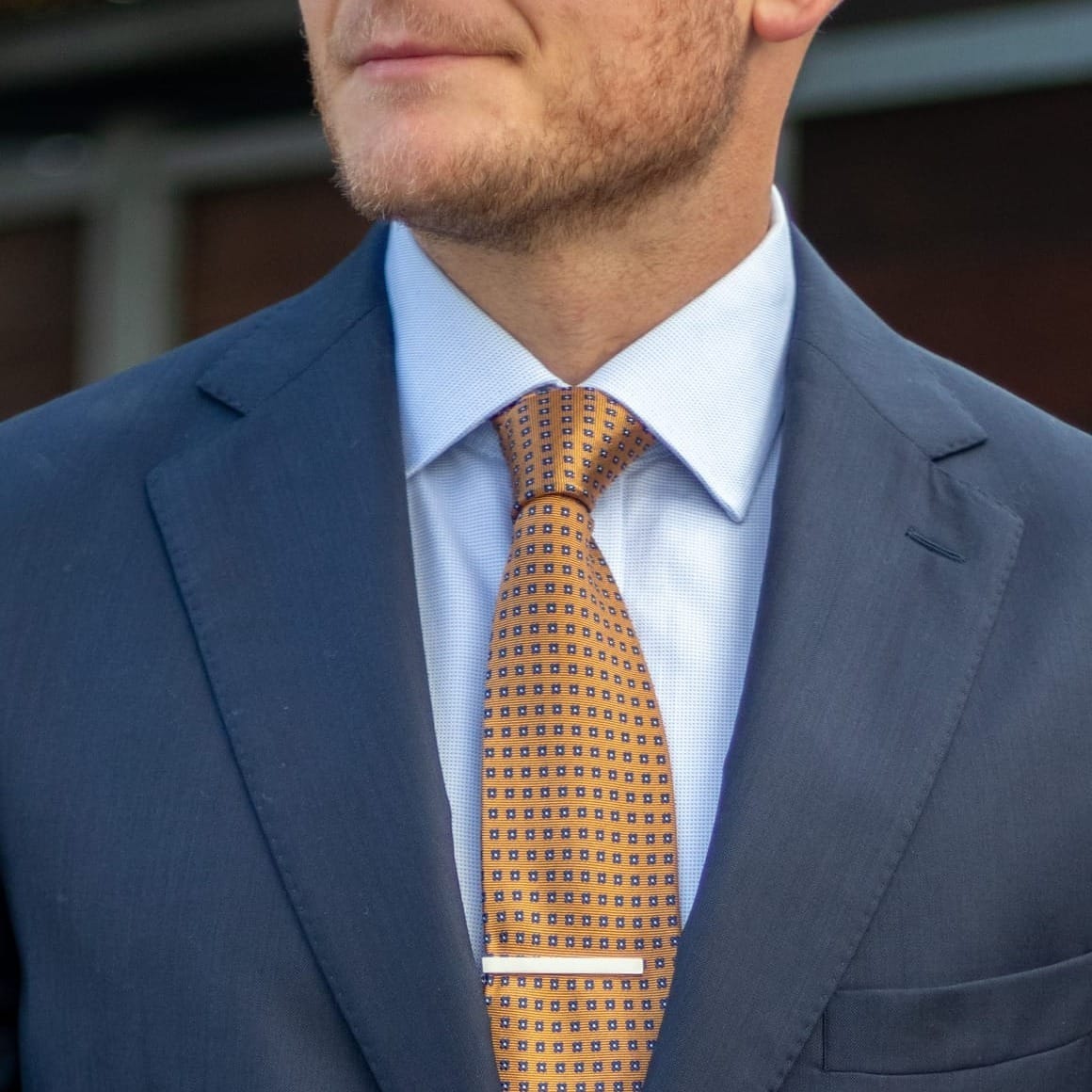
3. NECKTIES

Not all suits require neckties these days, but to own a suit is to own a dress shirt and, thus, a necktie (ideally more than one). Much like the collars mentioned above, your build will dictate the size and overall width of the necktie. A narrow-shouldered gentleman would require a thinner tie due to his less pronounced chest and torso dimensions, just as a broader man would require a thicker tie to compliment the thickness of his lapels better.
Ensure that the length of the tie is correct once you have fastened it around your neck, that is, falling just over the top of the belt buckle (or where one would be). Anything past this point is too long; anything shy of this point is too short.
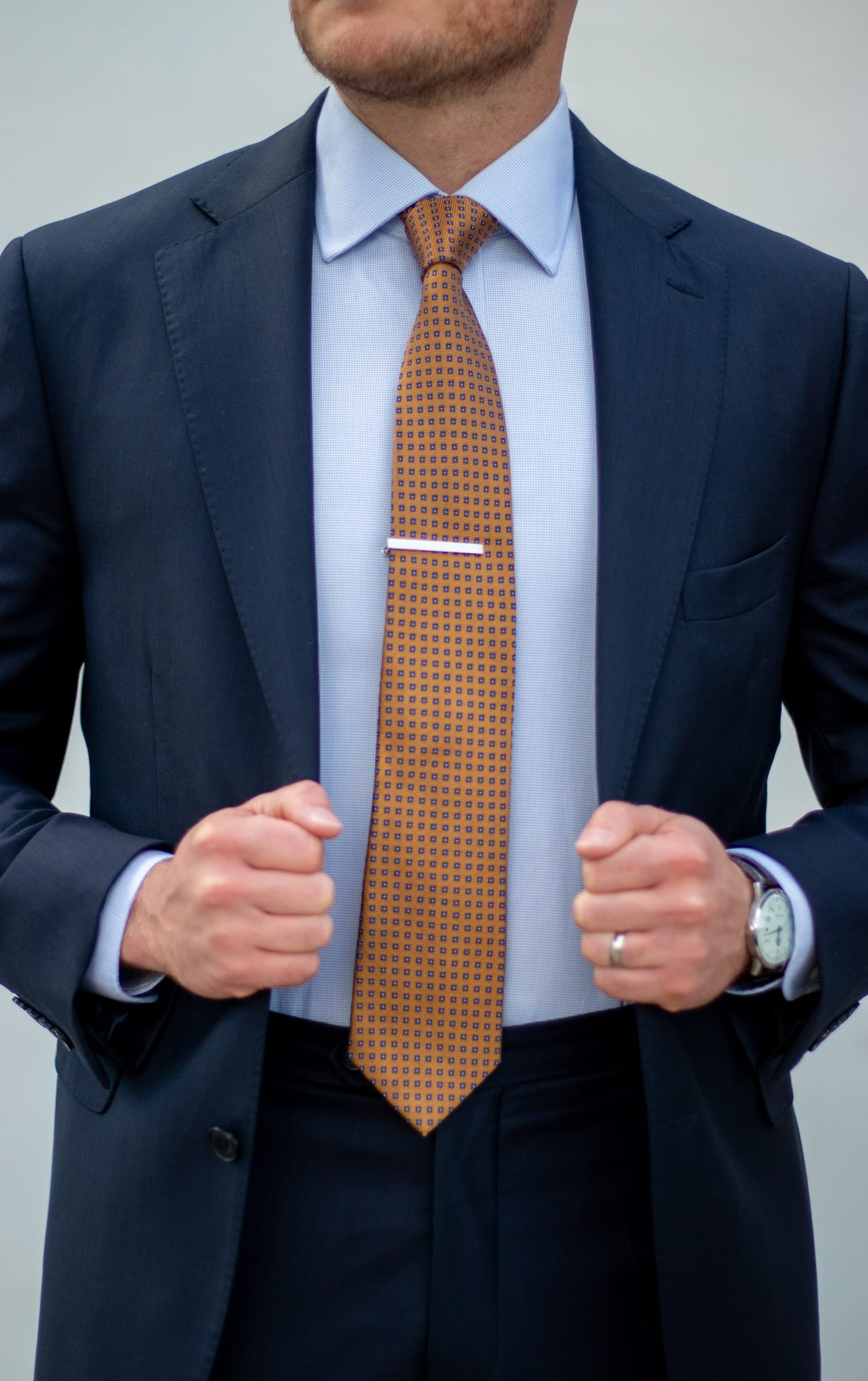
TIE CLIP OR NO TIE CLIP?
Tie clips (a.k.a. tie bars) aren't always necessary. The inclusion of one is to help keep your tie from blowing in the wind while outdoors or drooping into your food as you sit to eat. If you decide to include one, know the correct position is between your dress shirt's third and fourth buttons. It should remain visible when the top button of your jacket is fastened and should never be wider than your tie.
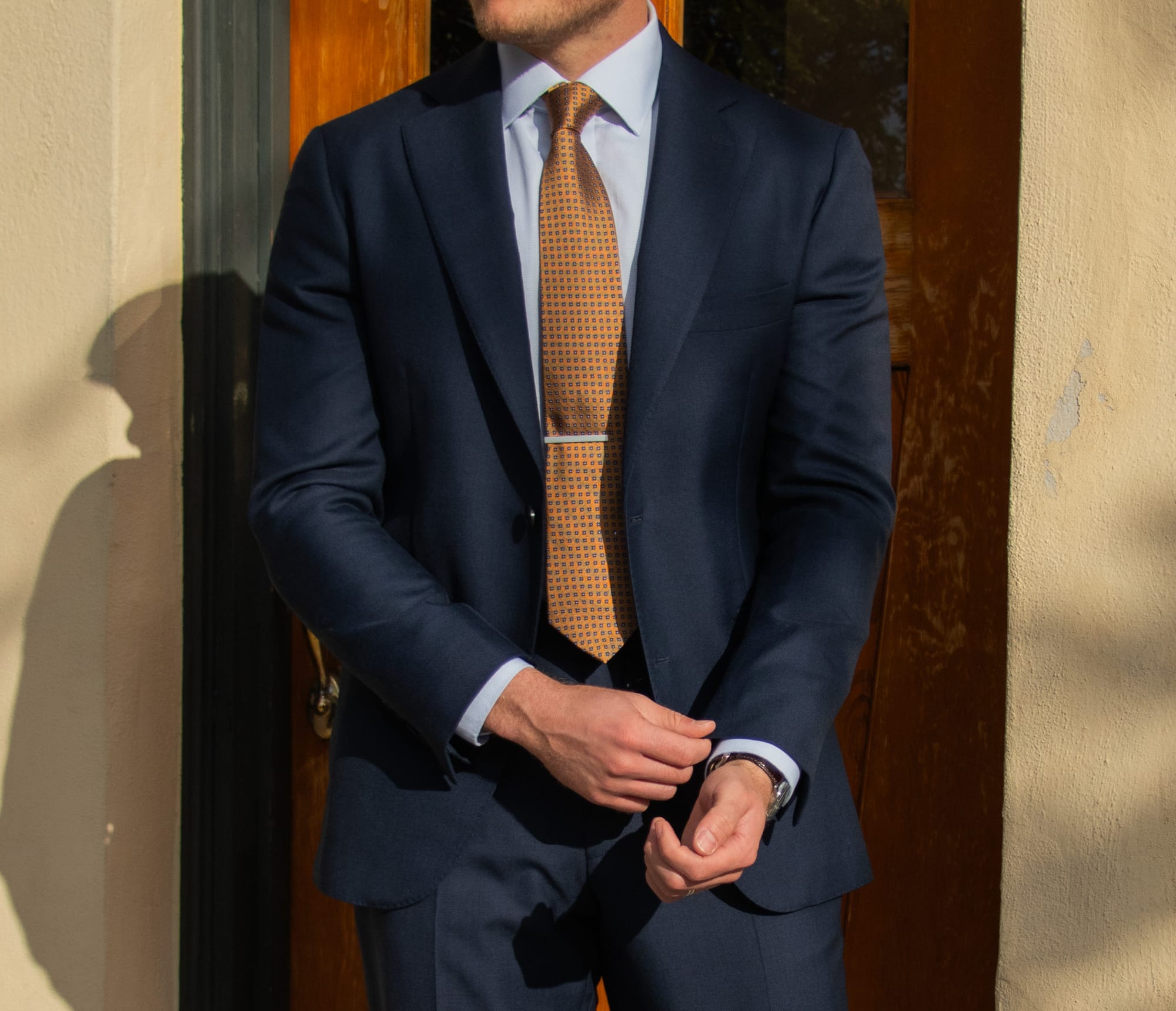
4. SHOULDERS

Any tailor worth their salt will tell you that if the shoulders of a suit jacket do not fit well, then there is only so much that they can do to alter it to fit you on the whole. If you find yourself shopping for a suit jacket and attempt to purchase something off the rack (meaning you are selecting from a variety of pre-cut pieces in-store), then at the very least, do well to ensure that the shoulders fit you before anything else. So long as this condition is met, a well-trained and experienced tailor can do wonders for your jacket in other areas.
The shoulders should never droop over your sleeves; if this occurs, the suit is too big. Instead, the shoulders should rest naturally on your body and be comfortable. If they hang over your body, the suit looks like it's wearing you. On the other hand, if the suit restricts your upper torso and arm movements, the jacket is too tight. Again, looking dapper shouldn't come at the expense of comfort.
The seam connecting the shoulder with the jacket sleeve should rest just past your shoulder bone (no more than three-fourths of an inch). This ensures sufficient room for any additional layers of fabric you might wish to add under the suit jacket and prevents the jacket from being too tight.
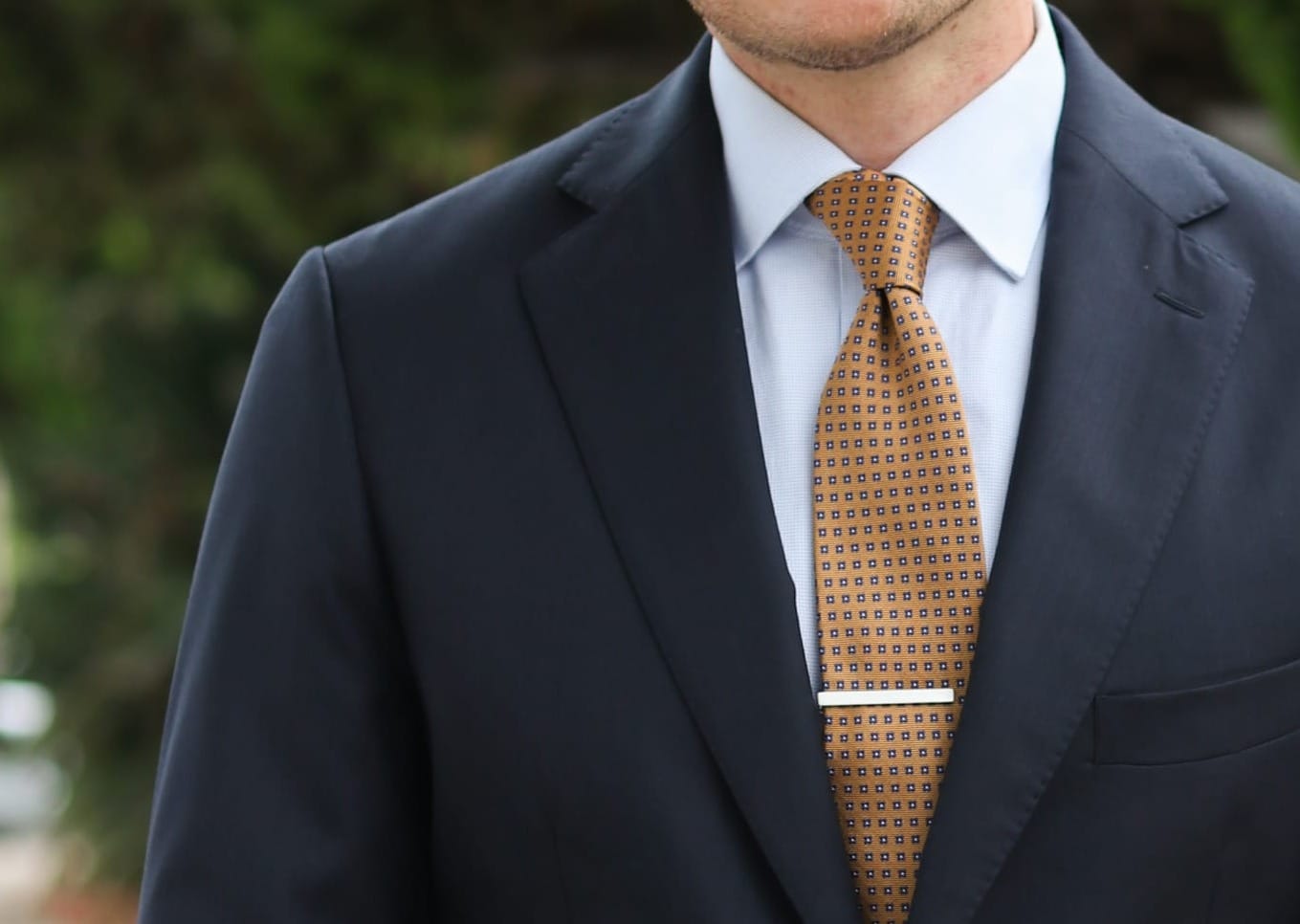
Another byproduct of a suit jacket being too tight is that it causes the lapels to bend in unsavory ways, which looks bad.
5. SUIT JACKET WAIST (JACKET CLOSURE)
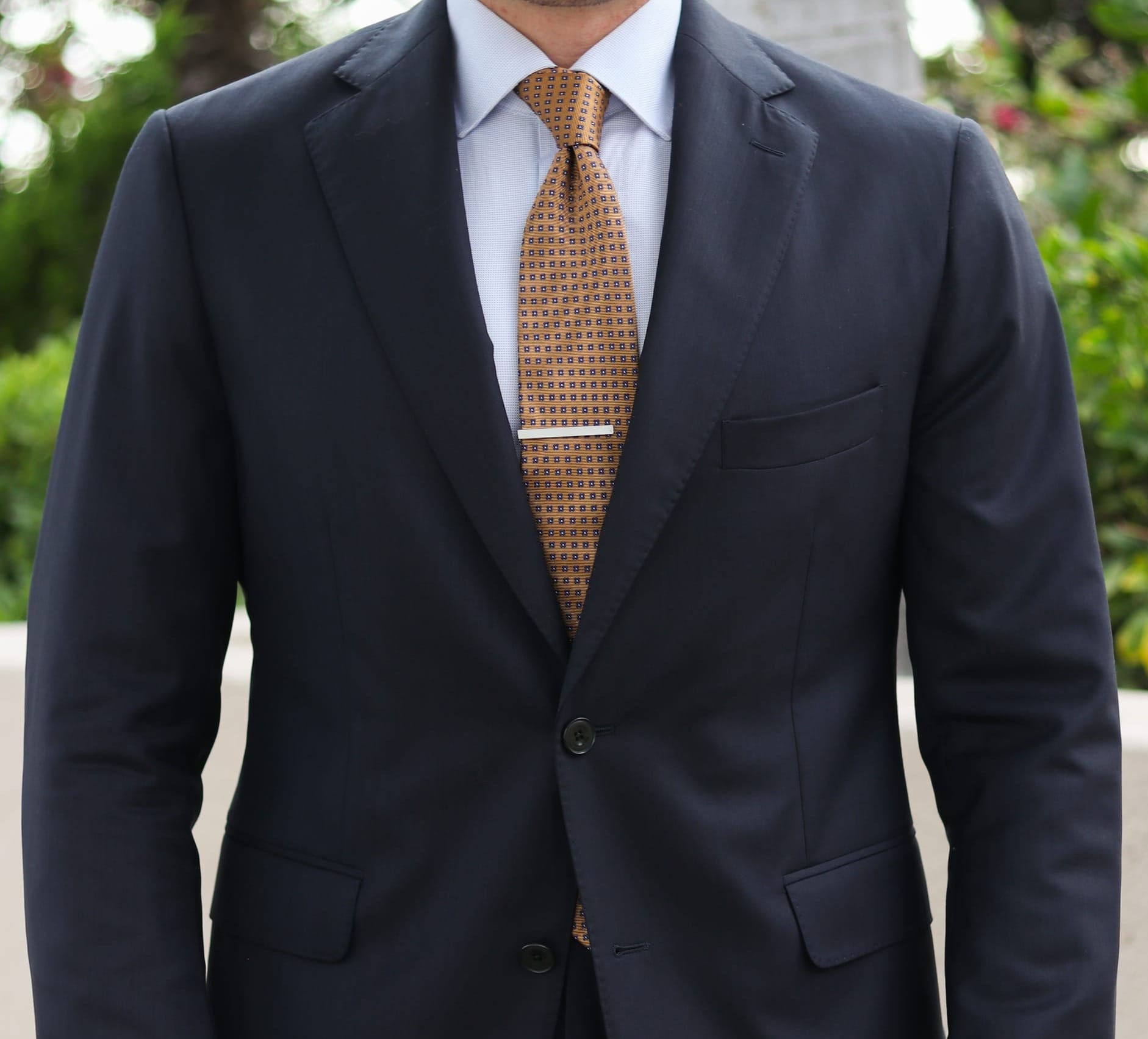
When you wear the suit jacket, the top button, when fastened, should have a slight pull but never too many ripples or creases emanating from the button. An easy visual reference to look for is a dramatic "X" shape when standing naturally; a subtle "X" shape is fine. If you have measured your waste correctly and still encounter these stark ripples and creases, size up or lose weight. When buttoning your jacket, fasten the top button, never the bottom button.
6. ARMS & WRISTS

PROPER SLEEVE LENGTH
The sleeves should hang straight, and depending on your body's unique dimensions, the sleeves may need to be removed and rotated to fit better for men who carry their arms too far forward or back. The sartorial term for this is sleeve "pitch," which indicates noticeable creases that form when the wearer stands still and upright.
JACKET & SHIRT CUFF
As far as how the sleeves of the jacket and shirt should look on the wrists, a general rule of thumb is that a quarter to even a half an inch of the shirt should remain visible when protruding from the jacket sleeve; the jacket sleeve, itself, ought to reside about half an inch below your wrist bone.
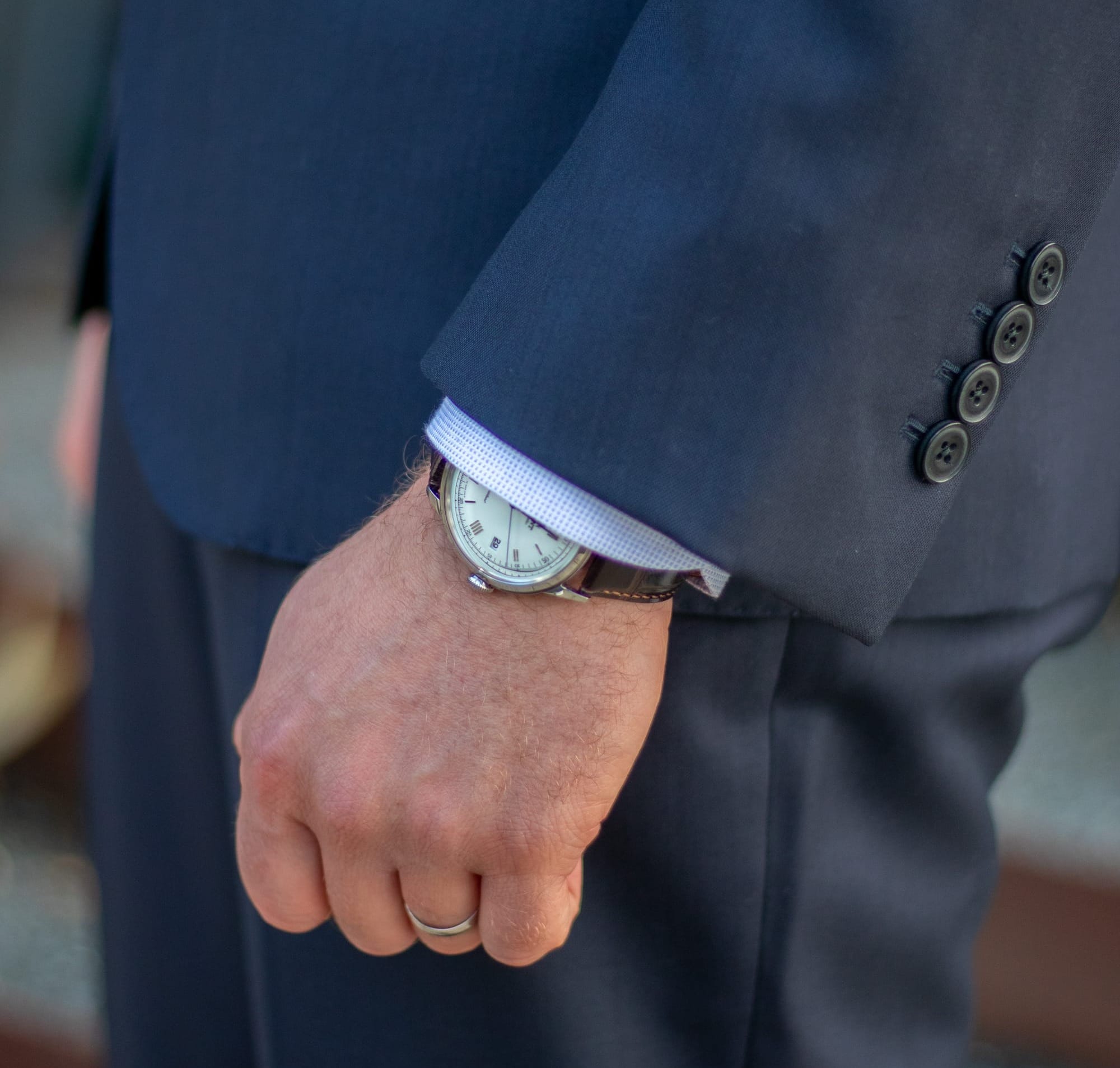
Most men wear their jacket sleeves too long; don't be one of them.
7. TROUSERS
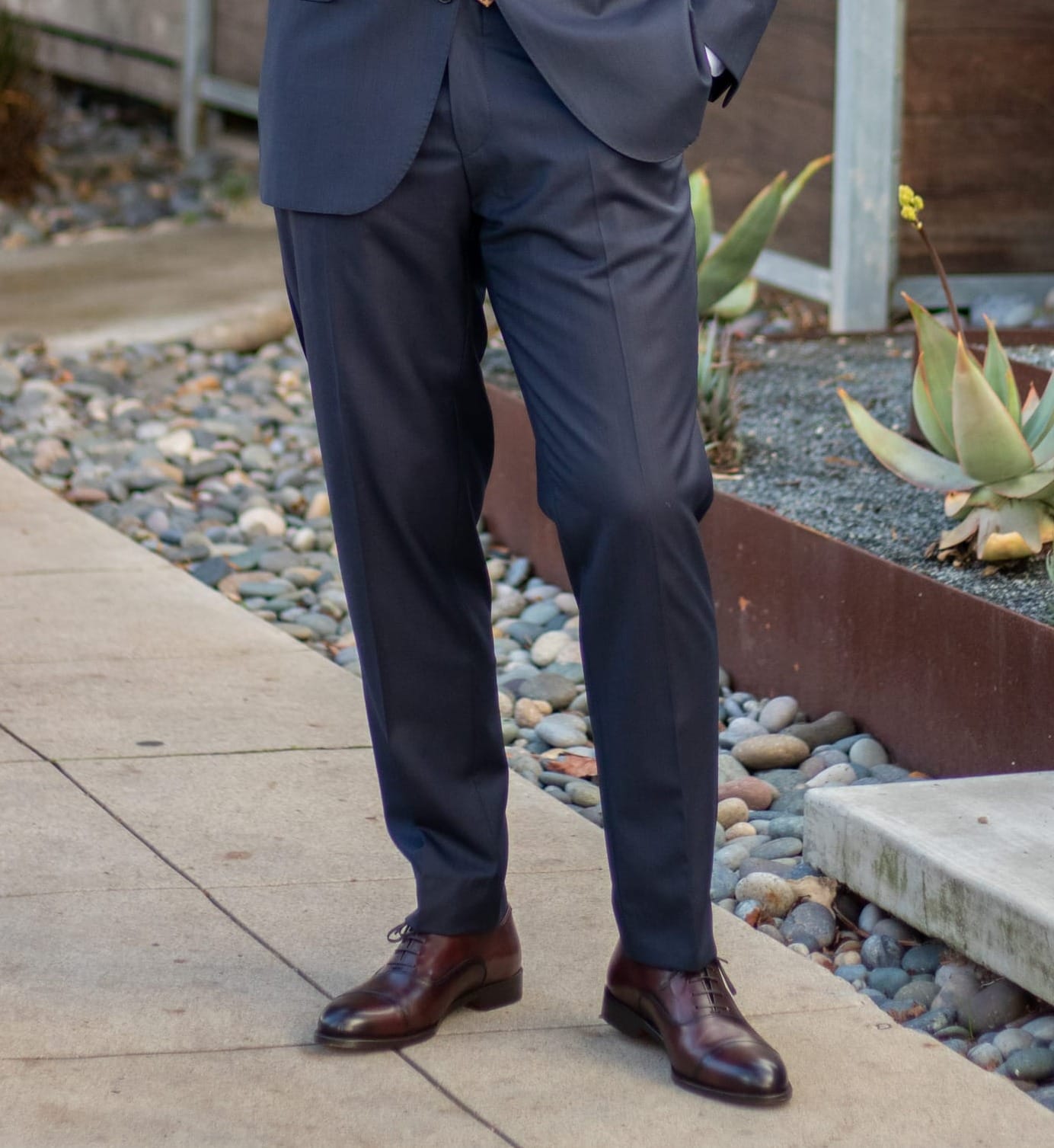
The general rule for suit pants is to wear as high on the waist as is comfortable. If too high, however, you sacrifice movement and comfort; conversely, if worn too low, the excess around the crotch makes you look sloppy and unrefined. So long as movement remains unencumbered and there is no hanging or excess fabric, you are good to go.
TROUSER LENGTH
As far as length is concerned, it is typical that suit pants should rest upon the dress shoes with a slight "break" in fabric.
Traditionally, the full break has been considered proper in menswear for many decades; however, there are three widely accepted options, and I will even show you a fourth one.
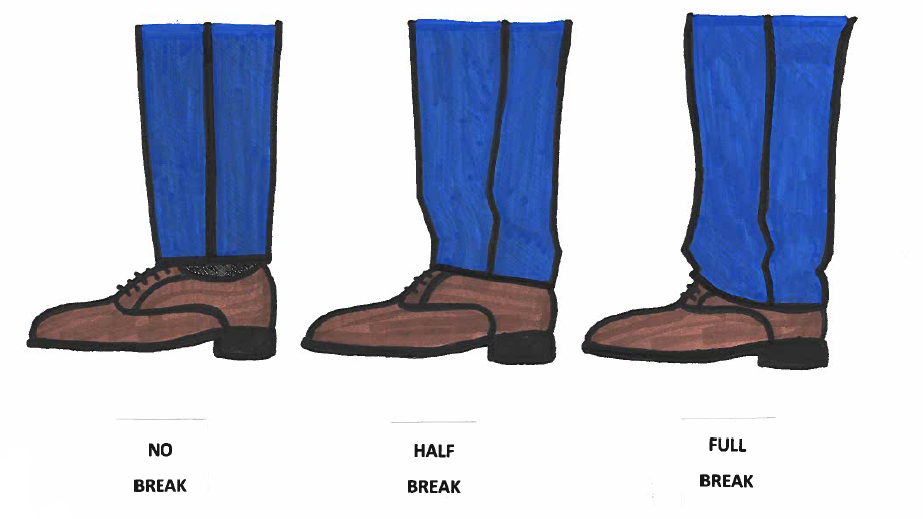
A full break means an excess of fabric (around one inch or so), which results in the shoelaces mainly remaining concealed by the pants, with nothing in excess. With this option, your standard plain-bottom trousers should gradually slant downward from the front of your shoes to the backs of your heels and avoid exposing too much of the heels when you are in stride.
A half-break means a slight excess of fabric not exceeding roughly half an inch, resulting in the shoelaces remaining partially concealed by the pants. With this option, your trousers would exhibit a much slighter slant downward from front to back, exposing more of the heel than a full break length.
No-break is precisely as it sounds. There is no immediate break of fabric from the front edge of the trouser, which should barely "kiss" the top of your dress shoe laces, showing a bit of sock in the process. This looks quite nice for younger, slimmer, and often men of a more athletic physique despite being less traditional and more fashion-forward.
Finally, there is the medium break, somewhere between a half-break and no-break. I bring this up last because it is my personal favorite. There is minimal contact with the end of the pant legs and the top of the dress shoes but no noticeable slant from the front of the shoe to the heel. This is a great way to look more modern while not leaning too far into the boldness of the no-break look. I also have a more athletic physique, so this look flatters me (but it might not be for you).
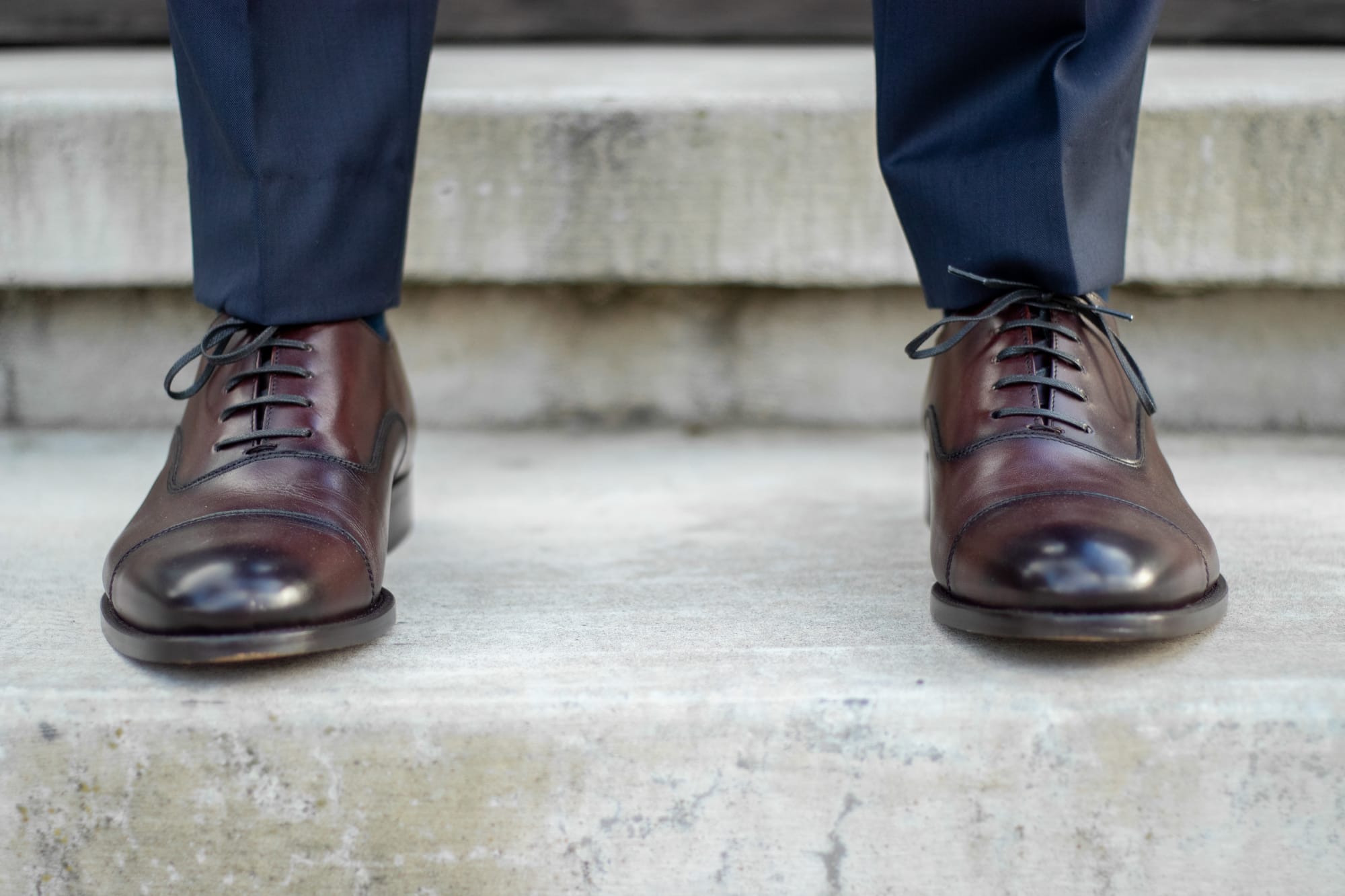
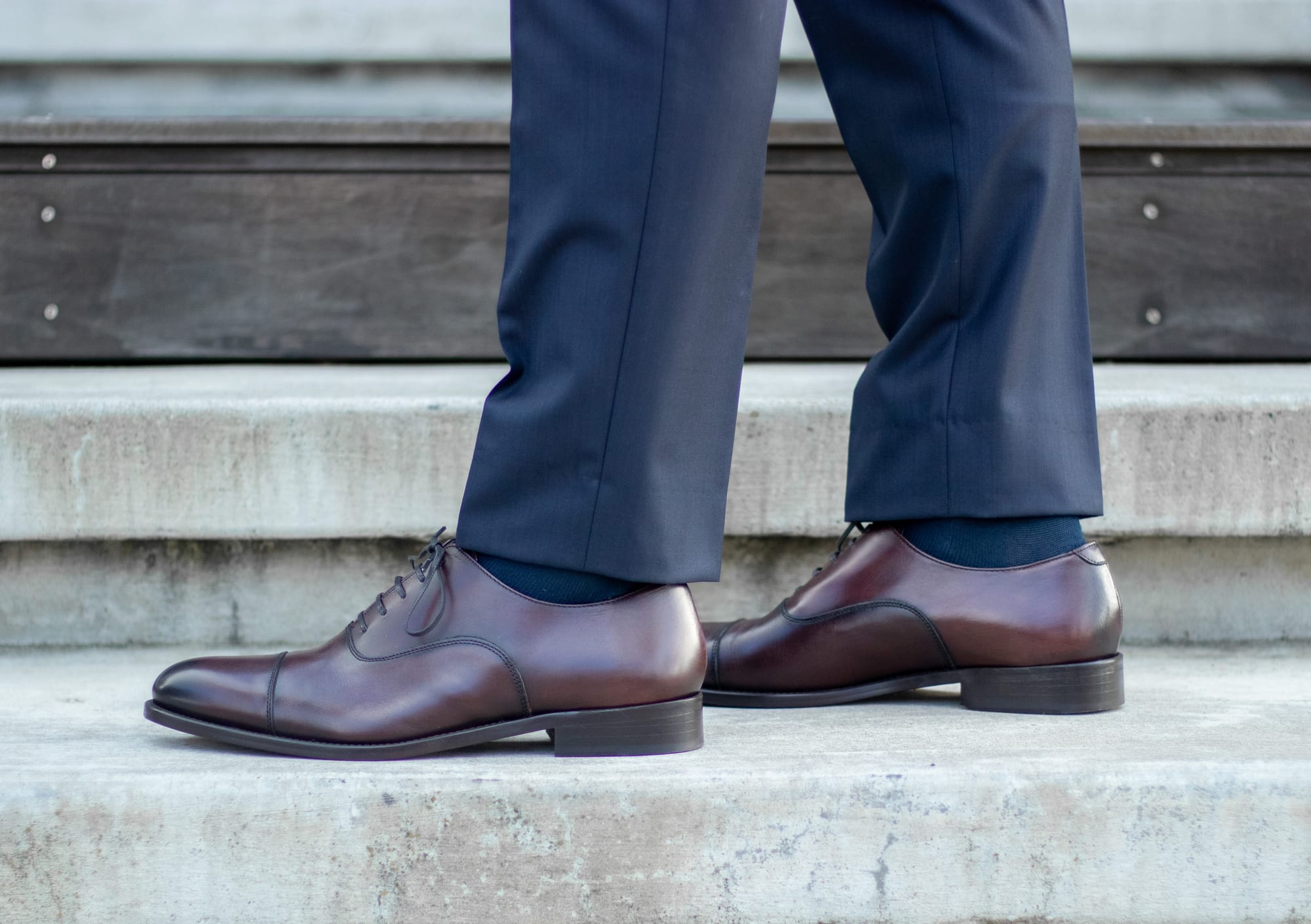
Medium break in action.
8. OVERALL LENGTH
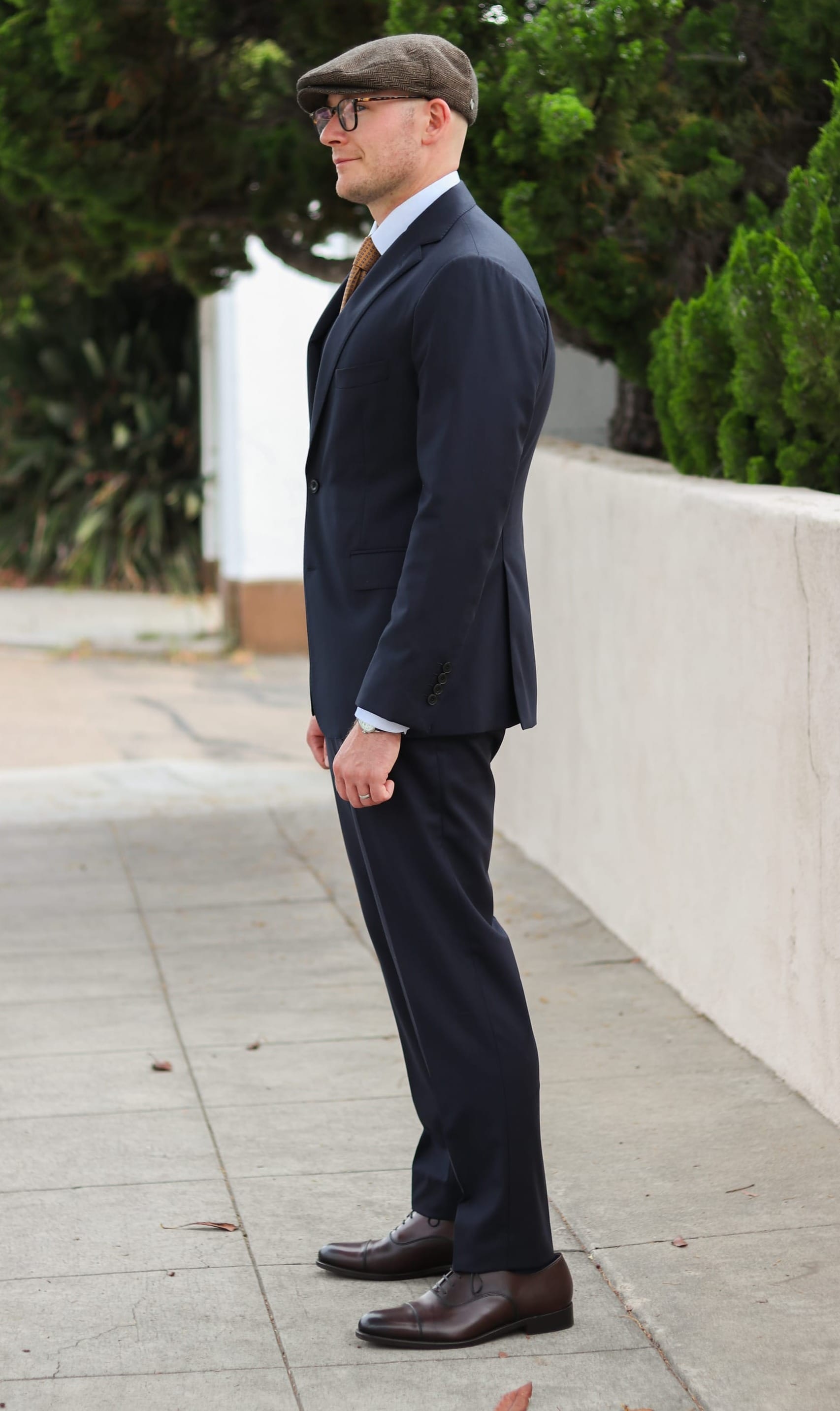
This final area of focus is perhaps the more nuanced of the eight others in that there are general guidelines to follow, but due to each man's varying shape and size, a singular way is not always the best way. Allow me to explain.
Most men who wear suits are familiar with the general rule that the suit jacket should be long enough to cover the curvature of your rear end while not appearing too long to diminish the appearance of the legs. Indeed, this guideline works but does not necessarily apply to every man's unique dimensions.
- The first technique uses the arm as the guide for visually determining if the jacket's length is copacetic. This is achieved by examining where the hand naturally falls when standing with one's arms resting to the side. The bottom of the jacket should align with the thumb knuckle. However, the issue with this method is that arm length varies from person to person (so it is sometimes hit-or-miss).
- The second technique employs a measurement taken from the back of the jacket collar (where it begins at the body of the coat) and proceeds towards the ground. This total measurement is then divided in half. Following is a more balanced and even result that prioritizes symmetry, which is why this method is how traditional tailors are often formally trained.
As I mentioned, finding a good tailor you can trust and build a relationship with is paramount. I can tell you from experience that a quality tailor can help you save money by adjusting the fit of your garments over time. They can also help your clothes fit you like a glove by properly accounting for your body's unique dimensions and measurements.
KNOWLEDGE IS POWER
I think that every man should own a fine-fitting two-piece suit. It doesn't have to be the most expensive brand, but it must fit you properly. A well-tailored suit should help you feel confident by allowing you to look like a million bucks. Now that you know how a suit should properly fit, you should be able to walk into any suit store and have an above-average knowledge of what to look for in a fine-fitting suit.


